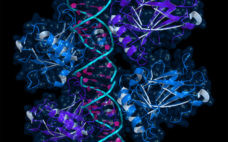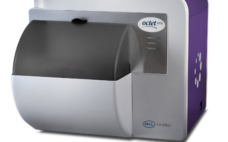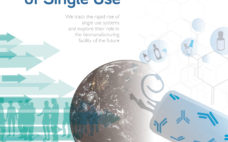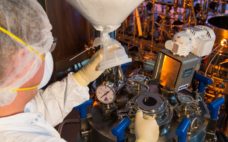Increasing demands for the production of biopharmaceuticals, such as monoclonal antibodies (mAbs), vaccines and recombinant proteins, require new, innovative purification approaches with higher efficiency and productivity while maintaining or reducing costs. One of these approaches is continuous capture chromatography. Continuous capture chromatography, also known as CaptureSMB was developed by ChromaCon AG. CaptureSMB is a 2-column periodic counter current chromatography (2-PCC) process where the first column is fully loaded and breaks through to the second column. The first column is eluted…
Sponsored Content
Gram Scale Transient Antibody Production and Stable Cell Line Generation Using Flow Electroporation™ Technology
In recent years researchers have turned to transient gene expression (TGE) as an alternative to CHO stable cell line production for early stage antibody development. Despite advances in transfection methods and culture optimization, the majority of CHO-based TGE systems produce insufficient antibody titers (low mg/L level) for full use within the biotherapeutic development pipelines. MaxCyte’s delivery platform for cell engineering is based on Flow Electroporation™ technology and provides a universal means of fully scalable, highly efficient CHO-based TGE for the…
Single-Use Technology: The Next 5 Challenges to Conquer
Now that single-use technology plays a part in nearly all bio-production processes, what is next? Several challenges remain that are still serious enough to delay or even stop the use of single-use technology, which in turn can extend the time to market and increase the cost of lifesaving biopharmaceutical products. Of the existing difficulties, which five are the most critical? This paper considers five existing challenges in the implementation of single-use technology including scale, automation, product compatibility and compliance, speed…
Accelerating the Biotech Value Chain Through the Implementation of High-Throughput Technologies
This webcast features: Fredrik Nilsson, Director of Downstream Development, and Jesper Worm, PhD, Scientist, Department of Analytical Development, at CMC Biologics. In this webinar, the speakers discuss and analyze the use of high-throughput technologies to optimize timelines and deliver value within the upstream and downstream development processes, using Octet HTX platform technology. Over the past year, the experts at CMC Biologics have used this technology to deliver a significant number of titer data points, and residual protein data measurements. This…
Globalization of Single-Use and an Introduction to the Mobius® MyWay Portfolio
Single-use systems have enjoyed a meteoric rise in recent years and are fast becoming the go-to option for all but the biggest batches in the biopharma industry. But how do you get the most out of these exciting systems? Here, experts track the rapid evolution of single use systems, their impact on the industry and biomanufacturing, and how they will transform future manufacturing operations. Single-use is now becoming well established into an “age of optimization.” More than 90% of biopharma…
Resin Selection to Optimize the Flexural Strength of Bioprocess Film
Abstract Single-use bioprocess technology offers several advantages for manufacturing biopharmaceuticals, such as increased transportability of fluids throughout the bioprocess workflow and a greater diversity of systems to support specific unit operations, e.g., rocking bioreactors. However, due to the flexible nature of the plastic materials used to construct the single-use containers, the flexural properties of the bioprocess film are critical for performance in such applications. This document focuses on how the resin selection and architecture of a bioprocess film can be…
Single-Use Powder Containment for Biopharmaceutical Manufacturing
For many years, media and buffer ingredients used in powder form were transferred from stock containers using open scoops, weighed and mixed in buckets or open-top bags, and then carried in and dumped from those buckets or open-top bags directly into production vessels—based on the premise that sterility wasn’t required at that early stage of manufacturing. While much of this process was often carried out in a separate room from the production line to contain airborne contaminants, final transfer to…
Quantum ReNu SU Technology® Validation Guide and Performance Testing Summary
As the use of disposable systems within biopharmaceutical manufacturing has moved from niche preclinical applications to large scale commercial processes. This has led to the requirement for novel technologies that improve processing throughput and allow manufacturers to increase their output. To this end, WMFTG has developed a new pumping technology to enable end-users to meet their downstream processing needs for unit operations such as chromatography and tangential flow filtration (TFF). Quantum allows end-users to use novel peristaltic technology for their…
Achieving Continuous Downstream Bioprocessing Through Multi-Column Chromatography (MCC)
In recent years, improving downstream manufacturing has become an emerging challenge to the biopharmaceutical industry. Initially, the bottleneck in biopharmaceutical manufacturing existed in the output of bioreactors. Due to advances in cell line development and upstream process (i.e., perfusion), the output of bioreactors has increased at a much faster pace than downstream processing capacity. Therapeutic biologics, including monoclonal antibodies (mAbs), represent the fastest growing segment of the pharmaceutical market. By 2019, the biological market is expected to exceed 20% of…
BIOne – Single-Use Bioreactor System
Convert your existing benchtop glass bioreactor to a single-use bioreactor in seconds. Distek, Inc. has developed a benchtop scale single-use bioreactor (SUB) system for mammalian cell growth and recombinant protein production. The pre-sterilized BIOne system is engineered with a disposable headplate welded to a triple-layered liner that can be easily inserted into a non-sterile bioreactor glass vessel, converting it to a sterile, disposable SUB within a matter of seconds. Simply remove your existing headplate and place the preassembled and irradiated…










